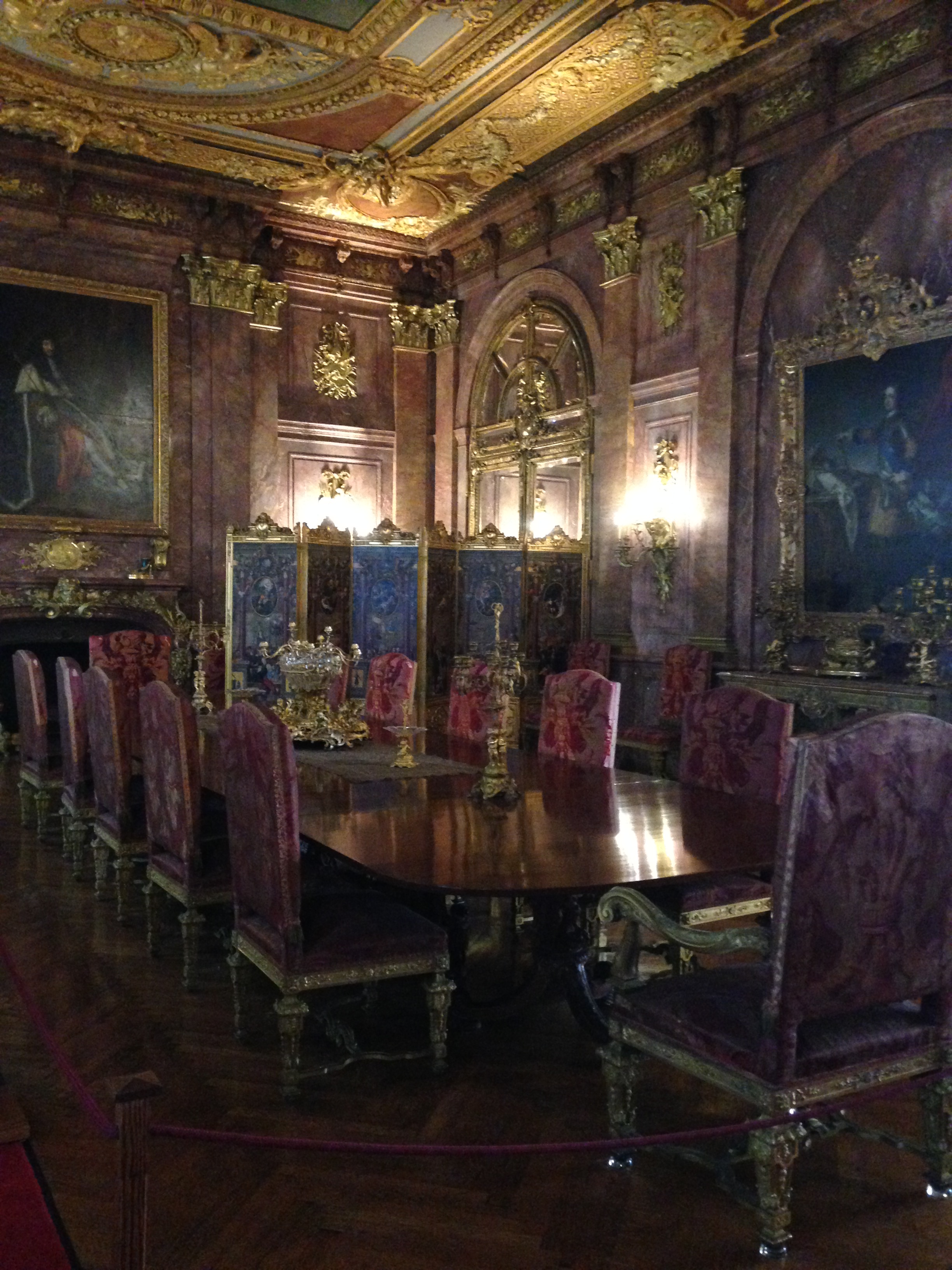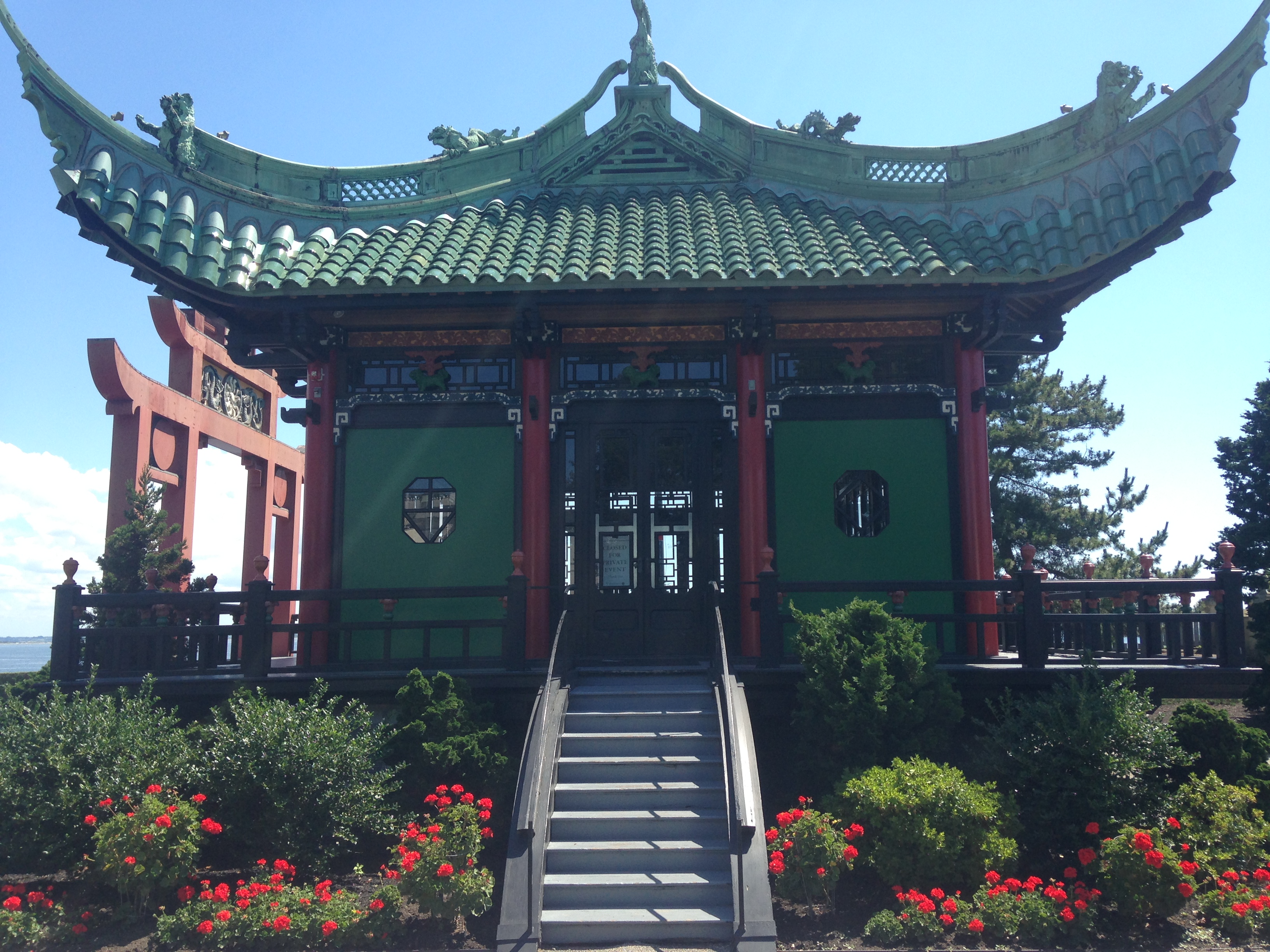
The Marble House (completed in 1892) was designed by Alva Vanderbilt, who was then the wife of William K. Vanderbilt. The house was designed by Richard Morris Hunt with decoration by Jules Allard and Sons. Ever the manipulative sort, Alva talked her husband into putting the Marble House in her name before it was even built. So when she divorced him a few years later, the house was all hers. She was the first important society woman to get a divorce, and she was quite proud of the fact. About a year afterwards, she found herself another rich husband with his own mansion in Newport. If you’re wondering why I’m judging her so harshly, it’s because Alva was pretty awful to her own daughter.
The Marble House is beaux arts in style, based on The Petit Trianon of Versailles in France. I wrote in my notes that it’s “the most ornate and Baroque”, but that was before I saw The Breakers. There’s no question that Alva wanted to be old French nobility, and she certainly wasn’t alone. Three of the four big Newport mansions are based on Versailles or other Baroque French chateaux. It’s interesting to realize that this was quite backward-looking, since the Baroque style had long ago gone out of fashion in Europe. Of course, drawing on the past to suggest current status has been a theme throughout human history. A few rooms at Marble House have Renaissance-esque details, too.
The Marble House is definitely over the top, yet it feels strangely accessible because none of the rooms are particularly large. Despite the gilt, brocade, and ornamentation, its scale gives a human feeling. One example of this would be the two little sitting rooms on the second floor, one on each side of the stairs. These were intended for guests to use while they were at Marble House parties. They’re tiny (for Newport, at least) and very welcoming.
My absolute favorite room in the house – possibly in all of Newport – is the Gothic Room. I was amazed and overwhelmed when I walked in. It truly makes you feel like you’re in a European church or castle. In this room, Gothic-inspired architectural details set the stage for the Gothic artifacts that Vanderbilt purchased as an already-assembled collection. Every surface is covered with tracery, grotesques, and crockets. The transplanted medieval artifacts and Gilded Age revivals fit so well together that I sometimes wasn’t sure which was which in the low lighting. Apparently, the room once included a collection of medieval illuminated manuscripts, but they have since been sold at auction. Bummer!
I also liked Alva Vanderbilt’s bedroom., which was ornate and Rococo but still rather pretty with its purple walls. Unfortunately, like many of the other elaborate rooms in this house, it didn’t photograph well (at least for me). Her daughter Consuelo’s bedroom, on the other hand, was dark and unfriendly in its Renaissance-inspired decoration. Apparently, she didn’t like it, but her mother insisted. Poor girl!
Behind the house is a large Chinese-inspired tea pavilion, which is also pretty cool to peek into. I remember reading in Gilded that a tiny train was set up to bring tea from the kitchen in the main house to the pavilion.




